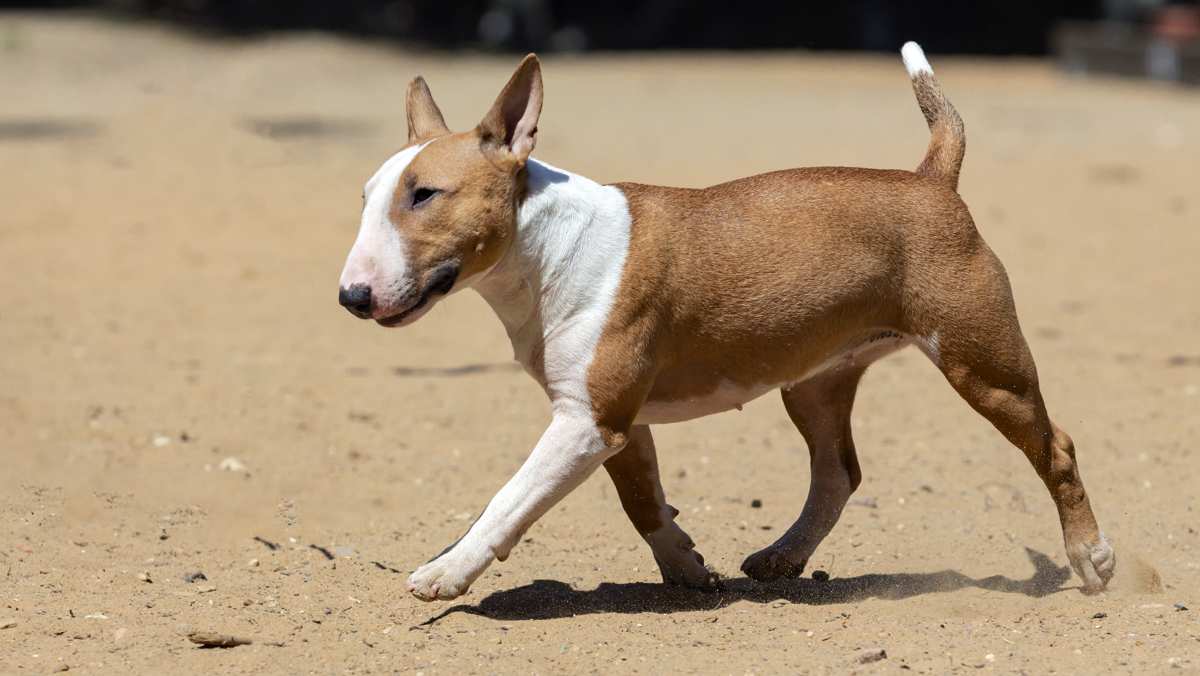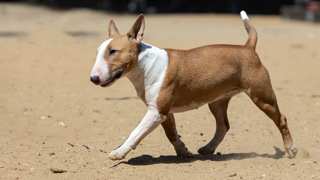Miniature Bull Terrier Breed Details
Miniature Bull Terriers were bred for a purpose: to continue using Bulldog breeds for extermination purposes and to have them not be lost due to the laws forbidding bloodspot that had popularized Bulldogs and similarly large dog breeds. Ratting was the perfect job for these small, muscular and Roman-nosed dogs, and it's why they run, dig and get into every corner of the house. They prefer to be around people, they tend to have aggression toward other dogs (especially those of the same sex), but they are great for large families with lots of older kids. They don't need experienced dog owners but they do need people who are patient, especially with training.
Here are some Miniature Bull Terrier facts:
PROS
- Clownish
- Very strong
- Highly active
- Wonderfully small
- Few health concerns
- Low grooming needs
- Not typically aggressive around strangers
CONS
- Love to dig
- May bark a lot
- Constantly curious
- Extremely stubborn
- Compulsive tail-biting
- Anxious when left alone
- Not good with other pets
- May be illegal to possess in some places
- Will sometimes break out in a full-house run

